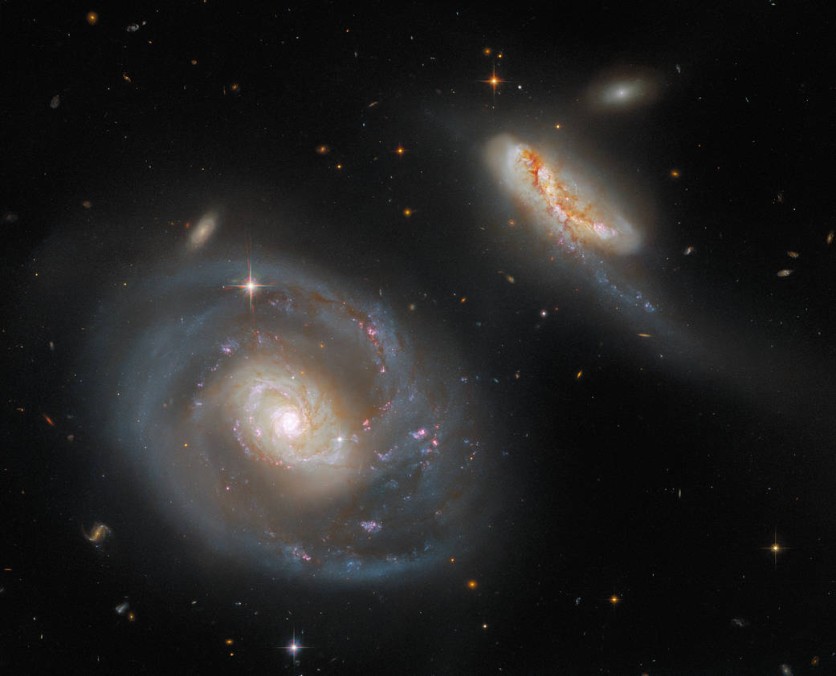NASA's venerable space telescope continues to capture the wonders of space after it released an upgraded image featuring a spectacular stream of star formation flowing between four colliding galaxies.

(Photo : NASA, ESA, and J. Charlton (Pennsylvania State University); Image processing: G. Kober (NASA Goddard/Catholic University of America))
A recently revised NASA Hubble Space Telescope photo of the Hickson Compact Group 31 (HGC 31), featuring a river of star formation flowing between four dancing dwarf spiral galaxies.
River of Star Formation
The Hubble Space Telescope has been in orbit, taking snapshots of the universe for more than three decades now, and scientists have never lost their interest in the observatory's large and wide archives.
The "river of star formation" image, as NASA termed it in a blog post released on Wednesday, May 1, is one of the telescope's fascinating archives as it highlights a galactic dance between four dwarf galaxies within the Hickson Compact Group 31 (HGC 31) of galaxies.
"Another dwarf, cigar-shaped galaxy to [NGC 1741]'s right joins their dance with a thin, blue stream of stars that connects the trio," NASA detailed in their blog post.
The HCG 31, the fourth member, can be seen at the bottom left. While at the center of the image is a bright star shining in the way of the quartet galaxies.
According to the space agency, these encounters between dwarf galaxies are commonly seen billions of light-years away, which means that it happened billions of years ago as well. However, these galaxies or members of HGC 31 are relatively near since they are only 166 million light-years away.
It has been decades since Astronomers understood that these dwarf galaxies are gravitationally tugging on each other. The image shows that their classical spiral shapes are stretched out like taffy, drawing out long streamers of gas and dust.
NASA said that the brightest object in the Hubble image is actually the two colliding galaxies. Its system is aflame with a firestorm of star birth, generated when hydrogen gas is compressed through close interactions between the galaxies and collapses to create stars.
Hubble's observation holds scientific significance since it has added important clues on how these galaxies collide with each other. This will give astronomers the chance to determine how and when the encounter began and to possibly forecast a future merger.
Read Also : NASA's Hubble Telescope Looks Into 'Needle's Eye' of Dwarf Spiral Galaxy With Strange Void
Two Interacting Galaxies
Hubble has a history of capturing galaxies in high-detail for almost a generation and multiple images have highlighted colliding galaxies. This photo, for instance, is a pair of galaxies called Arp 298, interacting 200 million light-years away from Earth and located in the constellation Pegasus.

Arp 298 will also be one of the first science targets of the new James Webb Space Telescope which will start its operations this summer. In fact, the $10 billion observatory is already in its final weeks of commissioning and will soon render more sharp images in various configurations.
Hubble will help the Webb telescope for the next few years in understanding the evolution of the universe through studying the solar system and other distant galaxies and stars.
Related Article : NASA's Hubble Telescope Gains New Milestone In Solving Mystery of Universe's Expansion Rate
This article is owned by Tech Times
Written by Joaquin Victor Tacla
ⓒ 2025 TECHTIMES.com All rights reserved. Do not reproduce without permission.




